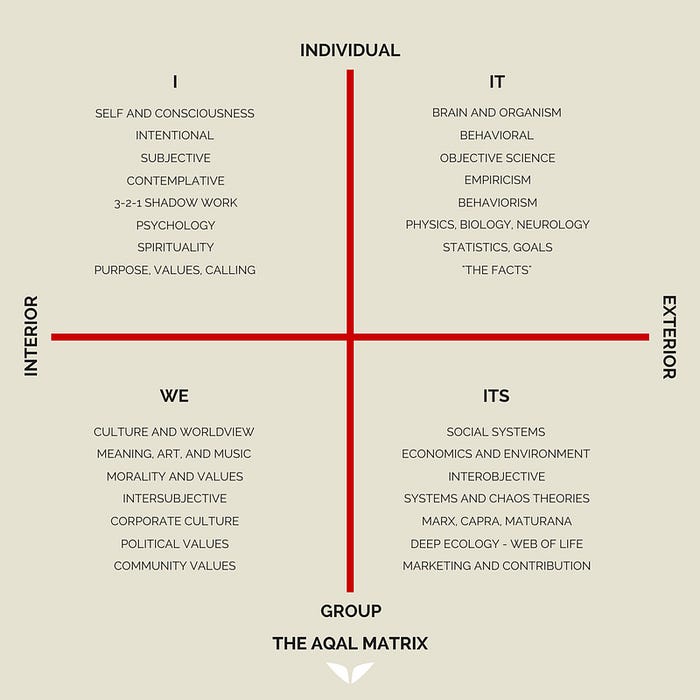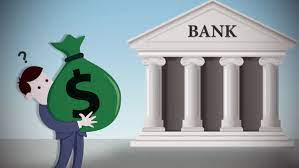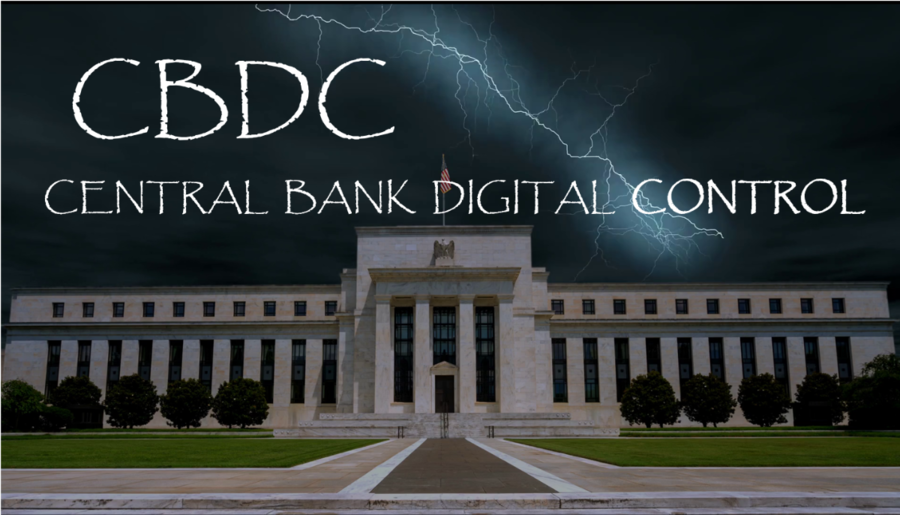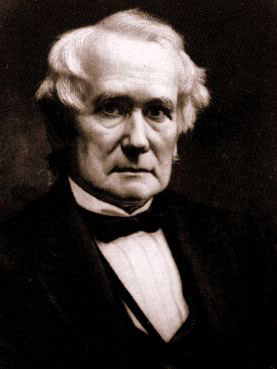The Banking Consensus
by Eugene Woloszyn, GPCT
New Banking Consensus Database (archive.org link) proving banks create new debt money when they make loans & thereby subject borrowers to years & decades of compound interest rates. This despite 3 economists winning the Riksbank Nobel prize who espoused the long debunked loanable funds model of banking.
Today, these outrageous interest rates average 23% on credit cards, 7-11% on home loans if customers can qualify, 7% on college debt, etc. US Banks create $2.3 TRILLION in such debt money loans yearly & thereby allocate these vast sums to insider speculators, fossil fuel developers, new surveillance companies, & provide capital to companies so they can lobby, donate, & control politicians. All these corrupt bank activities suppress US working families.
Note that this $2.3 TRILLION per year in bank created new debt money is larger than the discretionary budget of the federal government, which is only $1.7 TRILLION.

Creating a Caring Culture
by Howard Switzer, GPTN
This is a response to a conversation series between Charles Eisenstein and Benjamin Life are having on this subject, On "Creating" Culture. My comment got too long to put in the comment section so I thought I would just publish it as an article and share the link with them.
To explain what this is about and the questions being pondered, Benjamin Life writes:
how do we create healthy cultures that are not an appropriation of intact, high-context cultures that those of us who feel like spiritual orphans are learning from? How do we move from talking about the thing to actually practicing the thing? And how do we deal with the real grief of not having an intact culture and needing to create it?
I'm reminded of Ken Wilber's four quadrants, left-hand, interior quadrants represent immaterial reality, the right-hand quadrants represent exterior, physical phenomena. The above two quadrants are the individual interior/exterior, and the quadrants below are the collective interior and exterior. Religion and psychology are part of the individual interior, culture is the collective interior, thus while I think we collectively create culture some of what individuals, or a group of them, might do will have a greater impact on culture than others. I think Sacred Economics helped put people on the trail of one of those powerful influences when money was examined because it turns out money, the monetary system, has a large subconscious collective influence on society and thus culture.

Since the dawn of times, monetary systems have been shaping the flows of human activity in every realm of endeavor; food production, education, health, business etc., by determining how we value, apply and exchange our creativity, and the fruits of our labor. It is for this reason the most influential of all human-made systems.” — Bernhard Lietaer
The word belief has been used a lot here, a word I have defined as the line where thinking stops. John Trudell said while he did not want to disrespect anyone’s beliefs he had trouble trusting the word “because it has a lie in the middle of it” and he would be more comfortable if people would think more than they believe. It is a word I use very carefully.
We must here make a clear distinction between belief and faith, because, in general practice, belief has come to mean a state of mind which is almost the opposite of faith. Belief, as I use the word here, is the insistence that the truth is what one would “lief” or wish it to be. The believer will open his mind to the truth on the condition that it fits in with his preconceived ideas and wishes. Faith, on the other hand, is an unreserved opening of the mind to the truth, whatever it may turn out to be. Faith has no preconceptions; it is a plunge into the unknown. Belief clings, but faith lets go. In this sense of the word, faith is the essential virtue of science, and likewise of any religion that is not self-deception. — Alan Watts
I put religion with spirituality in the individual/interior, defining it as one’s relationship it the powers and principles of the universe, or “God.” Organized religion is in the collective/exterior, the social realm along with politics and ideologies. Sankofa is the concept of realizing you have taken a wrong turn and must go back to that point to determine a better path. The story of “God created the world” was such a fork in the path. Here Elisabet Sahtouris tells the story, from her book Earthdance, Living Systems in Evolution.
Our intellectual heritage for thousands of years, most strongly developed in the past few hundred years of science, has been to see ourselves as separate from the rest of nature, to convince ourselves we see it objectively — at a distance from ourselves — and to perceive, or at least model it, as a vast mechanism. This objective mechanical worldview was founded in ancient Greece when philosophers divided into two schools of thought about the world. One school held that all nature, including humans, was alive and self-creative, ever making order from disorder. The other held that the `real’ world could be known only through pure reason, not through direct experience, and was God’s geometric creation, permanently mechanical and perfect behind our illusion of its disorder.
This mechanical/religious worldview superseded the older one of living nature to become the foundation of the whole Western worldview up to the present. Philosophers such as Pythagoras, Parmenides, and Plato were thus the founding fathers of our mechanical worldview, though Galileo, Descartes, and other men of the Renaissance translated it into the scientific and technological enterprise that has dominated human experience ever since.
What if things had gone the other way? What if Thales, Anaximander, and Heraclitus, the organic philosophers who saw all the cosmos as alive, had won the day back in that ancient Greek debate? What if Galileo, as he experimented with both telescope and microscope, had used the latter to seek evidence for Anaximander’s theory of biological evolution here on Earth, rather than looking to the skies for confirmation of Aristarchus’s celestial mechanics? In other words, what if modern science and our view of human society had evolved from organic biology rather than from mechanical physics?
We all came from original people, indigenous people. Our ancestors had cultural beliefs and practices that were common world around. Within that belief in a living universe there was enormous diversity in language and practice. I think of this when we speak of avoiding cultural appropriation, the specific language, and practices, not the common concept of a living universe. It is a view that in my mind more accurately aligns with science, a living self-creating entity of which we are all a part. That there is no creator outside of the universe, creation is the universe, all that is and isn’t, I like to say. And I am always disturbed by the past tense, “God created” because creation has not stopped, the universe is expanding, evolution continues. I think science, like everything else today, has been captured by the financial hegemon directing it for personal gain but honest science, the investigation into what is, of creation, can inform and enrich our original beliefs.
Another fork in the road is the money, but more difficult to pinpoint, since there have been multiple exit ramps from the current system which we have generally blown past. The problem is that the current system is institutionalized usury, the abuse of monetary authority for personal gain. We have used commodities for money or to “back” money, and we have for the last 300 years or so used credit for money, but why do we not use money for money? Money is an ancient innovation, a symbolic payment system for paying debt as the people felt indebted to the universe, especially our Earth, for life and sustenance and because it is so important to life it was a sacred ritual. A native friend of mine is a surveyor, and when he comes to a site to survey, he makes a payment, a show of gratitude to the Earth Mother, of tobacco or cornmeal, for cutting some of her “children” to clear the way for his transit view. We need to make Earth and our money sacred again.
Money is a social power embodied in custom or law as an unconditional payment system and designating that which is to be used as a currency to represent it. Later it became a medium of exchange to facilitate trade. Various currencies such as feathers, bones or seashells, were employed for this purpose, cowrie shells may still be being used in some places in Africa. However, as Aristotle noted, money plays two roles, one as a medium of exchange and the other as an instrument of power due to its superior liquidity and ability to be accumulated. As you mentioned in Sacred Economics, Silvio Gesell solved that problem with demurrage. This is where we get into the subconscious influence of money.
Money has psychological consequences, and they can be negative or positive depending on the nature of the monetary system, how money is created, by whom and for what. The current global monetary system, institutionalized usury, besides the physical consequences of concentrating wealth and power to the top, driving destructive economic growth and predatory competition, it also has negative psychological consequences due to its separation from the sacred, such as loneliness/alienation, non-cooperative/hyper-individualism, and unethical/criminal behavior. I see usury as the sin of sins, the progenitor of the seven deadly sins we see rife in society. All religions once banned the practice, it was the only thing that made Jesus angry enough to get violent. In his Divine Comedy, Dante put the usurers in the deepest reaches of hell, characterizing the practice as “an extraordinarily efficient form of violence by which one does the most damage with the least effort.”
The ancient Greeks recognized that the most vital prerogative of democratic self-governance was to issue the money as a debt-free medium of exchange and yet democracy remains out of our reach as the power aspect of money has empowered rulers whose primary interests are profits and power.
Issuing money as a public utility changes the first cause of money to care, money issued as a debt-free, permanently circulating asset for the common needs of the people. The act of creating money to spend for the common welfare makes it a care-based system which would have profound psychological effects on society and governance. What we have now is a profit-based system of usury, the sin of sins, which also has profound psychological consequences, but they are negative.
Changing the money will change the way we live by replacing the profit-based system with a care-based system. It is not complicated, the first cause of money now is profit, it is issued as debt for private gain. I Think that money with a new first cause of care will have profound psychological impacts on society, reversing the negative influence of usury. The legislation is already written and legally vetted to do that and was introduced to Congress in 2011 but was never voted on since financial corporations through campaign donations and lobbying have a lock on public policy with our servile legislators.
I think it will take a huge movement to change the system and there is much confusion provided by experts to keep it down, but the American Revolution was all about the money issue because money is the governing factor, it determines who rules, who decides. Greenbacks to provide for the nation’s defense against an effort to dissolve it were publicly issued money too, and while in circulation debts were disappearing. This is why the bankers hated them.
Another psychological effect of money was demonstrated at least three times in history in monetary systems using a demurrage currency. The most recent during the Great Depression was in Wörgl, Austria where $2.5 million in public works were accomplished issuing only $6000 due to the high velocity of circulation of the stamp scrip. It also had a profound psychological effect due to the dynamics of net present value. That is a mathematical equation that shows how the demurrage currency increased the value of things in the future. This shifted the thinking of people from short-term to long-term. Ancient Egypt and the High Middle Ages are two other examples. Of course, people were unaware of this equation and did not make such calculations in their heads, it was a subconscious psychological effect. Our most ancient ancestors, the indigenous people, practiced long-term thinking, considering the impacts of their actions on 7 generations into the future. We have a tool to help get us there once people know what the task is. I think by right action we can collectively create a new culture.
So, this brings us to the apocalypse, the “lifting of the veil” on the crimes of the power elite, the reality of the system under which we live, a reality we reject in favor of a more caring system. It is the end of their world order in order to establish a new one, one that gets us back to the garden. I saw a TikTok video the other day of a young woman saying that the reason why change is afoot is because more and more people are able to see through the lies they are being told. Yes, the truth will set us free to create a new culture.

Biden Administration Hides Doubling of Federal Deficit
by Eugene Woloszyn, GPCT
For the US fiscal year ending 9-30-23, the Treasury Dept. reported that the US budget deficit was $1.7 Trillion, an increase of $320 Billion or 23%. That sounds bad enough, but there are hidden tricks behind those numbers. Little reported by the mass media, the NYTimes revealed on 10-20-23 the deficit increased 100% this year. The Biden Adm & Treasury Sec. Yellen used an “accounting MIRAGE” related to student debt forgiveness, which was vetoed by the Supreme Court. Nevertheless, the Treasury added $300 Billion to the budget in 2022 & then subtracted the same amount in 2023 to hide the doubling of the deficit.
Net interest on the US debt of $33.7 TRILLION increased from $475 BILLION in fiscal 2022 to $659 BILLION in 2023, an increase of 39%. As the interest rate on 10 year Treasuries has just exceeded 5%, the US interest cost per year will soon exceed the cost of the Pentagon. In 8-2023, treasury.gov reported it cost $808 BILLION to “maintain the debt, which is 15% of total spending”.
Over the next 10 years, interest on the US debt is estimated to be $10.6 TRILLION.
CAN THE USA AFFORD MORE RECKLESS DEBT?
Biden has proposed another $100+ billion package for current & potential new wars. Adding to the $113 BILLION already given to Ukraine, Biden proposes $60 BILLION more. After Israel has already received $132 BILLION from US since 1948, Biden proposes $14 BILLION more. Israel is a wealthy country with a very advanced High Tech & armaments industry. It also receives large donations from private US citizens in addition to $3.8 billion in U.S. military aid per year. In the first month of the Palestine/Israeli war, Israeli bonds purchased doubled to $2 billion, a record in 30 days. Most of these bonds were bought by US State & City Treasury Departments.
Source: Bloomberg News, 10-22-23).
YELLEN: US CAN AFFORD 2 WARS AT ONCE
Former FED Chairman & current Treasury Secretary Janet Yellen claims “the US can afford to support 2 wars. America stands behind Israel, period.” A comment on a financial website replies to Yellen: “Why not 3 or 4 wars simultaneously?” Despite escalating giant debts, the US repeats the failed wars in Vietnam, Afghanistan & Iraq. No one is ever imprisoned for these war disasters so they are repeated with no fear of repercussions. But the American people pay in blood & taxes. The ruling US elites ignore the possible loss of the dollar as reserve currency to the world, which greatly benefits all Americans, & will be painfully felt if lost.
BIG CRACKS IN THE US FINANCIAL ECONOMY
There are growing defaults in vehicle loans, particularly sub-prime loans. 8% housing loans have paralyzed home buying. $2 Trillion in Junk bonds will be difficult or impossible to roll over at new higher interest rates of 7%-10%. This will sink unprofitable Zombie corporations & the heavily indebted corporations created by Private Equity leveraged buyouts & financial “engineering”. As Bloomberg reported on 10-18-23, “Corporate America Is Ignoring the Fed & BEING in debt”.
CRISIS IN THE $24 TRILLION TREASURY MARKET
The US Treasury market is in great upheaval in October 2023. This market has grown from $3 Trillion in 2000, $5 T in 2007, and $17 T before COVID. US banks don’t want to buy Treasuries. Foreign nations such as Japan, India, Saudis, & Germany refuse to buy more Treasuries. China has decreased Treasuries from $1.3 Trillion to .85 T.
The Fed bought many of those Treasuries in order to try to stimulate the US economy. As inflation exploded to 9% because of bad Fed policies, the Fed responded by raising interest rates very rapidly & trying to lower its balance sheet by selling Treasuries. Exploding US deficits forced the US Treasury Dept. to create more Treasuries to cover the deficit & US debt grew. The Fed has ricocheted from one bad policy to another since 2000. The Fed doesn’t regulate Wall Street, but is controlled by Wall Street through a revolving door of financial executives moving to jobs at the FED & US Treasury. The American people will have to decide how long we can put up with a failed and corrupted Fed, which coddles, not regulates, Wall Street.

The Most Important History is the History We Don't Know
Henry Charles Carey
Chief Economic Advisor to President Abraham Lincoln
By Howard Switzer, GPTN
Carey was the major proponent in the Lincoln Administration of issuing debt-free US money, Greenbacks. In referencing the US economy under the Greenback system, he said, ”… for the first time, too, in the history of the world, there has been presented a community in which nearly all business was done for cash, and in which debt has scarcely an existence … there has been a large and general diminution of the rate of interest … traders have therefore become more independent of the capitalist, while the country at large has become more independent of the ‘wealthy capitalists’ of Europe.”










